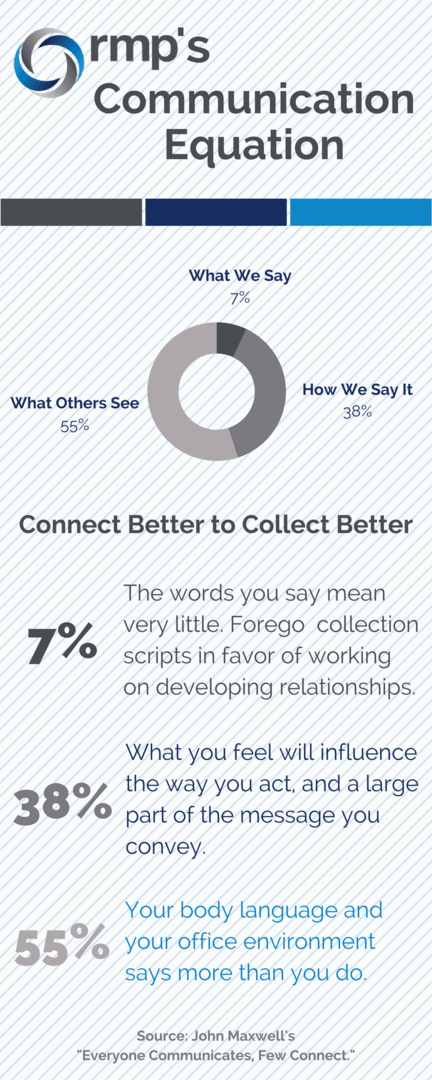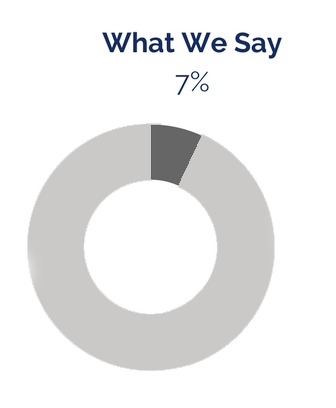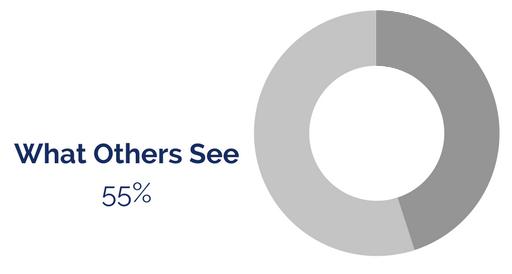
Everyone in business, including those in the business of providing care, understands the importance of making a good first impression, and following that impression with effective communication. Your patients are your customers, and their first impression of you is critical to the success of your healthcare organization.  One study on the impact of customer service has cited that 30% of people would avoid a vendor for two or more years after one bad experience. Additionally, more than half of the people who cited having a poor experience said they switched to a different company, and nearly all of those people recommended that others select another vendor as well. Think about the impact that could have on your hospital or medical practice, especially considering the lifetime value of a patient.
One study on the impact of customer service has cited that 30% of people would avoid a vendor for two or more years after one bad experience. Additionally, more than half of the people who cited having a poor experience said they switched to a different company, and nearly all of those people recommended that others select another vendor as well. Think about the impact that could have on your hospital or medical practice, especially considering the lifetime value of a patient.
Yet despite the importance of providing great customer service, with everything that needs to be accomplished at registration – gathering and confirming personal demographic information, verifying insurance eligibility, estimating patient responsibility –attention to good communication can easily be overlooked. But you can be sure that there is one person who is not overlooking it: your patient.
The Communication Equation
When you are communicating with your patients, what are you really saying to them? Communication is not limited to the words we say. Much of what we communicate also comes across through our tone of voice and body language. Understanding the importance of each of the elements of this “communication equation,” and developing better skills will help you connect better, and collect better.
 The words we say only account for about 7% of what is believed in a conversation. This is why we urge you to forego collection scripts, and to instead work on developing a relationship with your patients. Make an effort to prioritize a warm, personal greeting before handing over a clipboard of registration forms. Note a few details about your patient in your charge capture system so when they return for their next visit you remember to ask about their family or their recent vacation. These simple details will help you to connect with the patient, so that your words go much further than just 7% of the way.
The words we say only account for about 7% of what is believed in a conversation. This is why we urge you to forego collection scripts, and to instead work on developing a relationship with your patients. Make an effort to prioritize a warm, personal greeting before handing over a clipboard of registration forms. Note a few details about your patient in your charge capture system so when they return for their next visit you remember to ask about their family or their recent vacation. These simple details will help you to connect with the patient, so that your words go much further than just 7% of the way.
 The way you say something is much more important than the words you actually
The way you say something is much more important than the words you actually
say. In fact it accounts for 38% of the communication equation. Joyce Meyer teaches us about power thoughts, or the idea that what you feel will influence the way you act. She says, “You may not be help to what you feel but if you change what you think, your feelings will catch up with your thoughts.” Having the right mindset about collecting from patients, and trying to put yourself in their shoes before being judgmental about their situation, can help you to change the way you feel and, in turn, improve your communication and your results. For help changing your mindset about patient collections, (as well as tips for better collections throughout the revenue cycle and leadership tactics for building a stellar team) watch our “Collecting from Patients: The Human Component” webinar on demand!
 The most influential element of the communication equation is what others see. This accounts for more than half of the message you communicate to your patients. Your body language says more to them than what you say, or even how you say it. For example, when asking for a copay if you follow a precise script and deliver the message cordially and kindly, but you are sitting behind a desk with your arms folded and rolling your eyes like you expect to be met with an excuse, you probably will be.
The most influential element of the communication equation is what others see. This accounts for more than half of the message you communicate to your patients. Your body language says more to them than what you say, or even how you say it. For example, when asking for a copay if you follow a precise script and deliver the message cordially and kindly, but you are sitting behind a desk with your arms folded and rolling your eyes like you expect to be met with an excuse, you probably will be.
And it is not just about your body language. What does your office environment say to your patients? Are your front desk representatives smiling and attentive, or are they seated behind glass and so busy with dozens of other tasks that greeting your patients is no longer the priority? It only takes 7 seconds to make an impression on a patient walking into your office, and that short time could set the tone for up to 55% of what you communicate, so make sure you are sending the right message.
Applying the Equation to Collection Calls
If what others see is so critical to communication, what happens when you are trying to communicate with a patient over the phone? When we are on the phone, the actual words we say still hold very little meaning. Most of our communication is through tone of voice. In fact, 84% of phone communication depends on voice tonality.
When attempting to collect over the phone, having the right mindset is more important than ever. Rather than jumping right in to the collection aspect of the call, attempt to establish a connection and ensure the patient does not have any questions or confusion about their responsibility. This will go a long way when it comes time to ask for money.
Being comfortable with your organization’s policies and procedures is also critical, so that there is no hesitation or confusion while you are working with the patient on a mutually agreeable arrangement. Confusion or uncertainty on your part is all the patient will hear, and ultimately what they will feel as well.
Applying the Equation for Organizational Success
It is important to remember that while your providers are excellent at what they do, perhaps even the best, your competition will always rival your services. It is when you provide an exceptional patient experience that you set yourself apart from everyone else, and is how you can ensure organizational success. Think back to those first impressions, do they suddenly seem much more important? They should!
Want more help connecting better for collecting better? Get insights into what motivates patients to pay, the steps to follow for a successful collection call every time, and tips on how to communicate more effectively in our free webinar on demand: Patient Collections 101!
Take this article with you! Click here for a printable version.
Written by Ali Bechtel, Digital Marketing Manager
Source: John Maxwell’s “Everyone Communicates, Few Connect”
This information is not intended to be legal advice and may not be used as legal advice. Legal advice must be tailored to the specific circumstances of each case. Every effort has been made to assure this information is up-to-date as of the date of publication. It is not intended to be a full and exhaustive explanation of the law in any area, nor should it be used to replace the advice of your own legal counsel.
Tags: communicating with patients, communication equation, patient collections